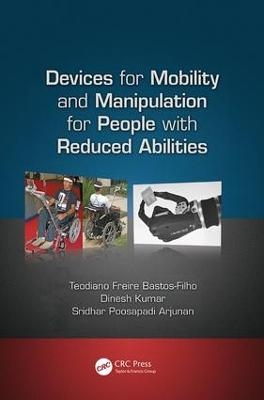
Devices for Mobility and Manipulation for People with Reduced Abilities
CRC Press (Verlag)
978-1-138-07378-4 (ISBN)
Each chapter covers a specific technology, and starts with a general introduction of that technology, followed by the technical details and an assessment from the user’s viewpoint. This includes the user benefits and suitability, cost, reliability, and required infrastructure. The chapter also provides illustrations or photographs of the devices, and identifies shortcomings, current research related to the technology, and possible development opportunities. Each chapter provides the range of specifications for the equipment and includes a list of manufacturers.
Discusses user advantages and conditions
Examines technologies for robotic wheelchairs and prostheses
Helps a clinician or user understand the different devices that support people with disabilities
This book provides clinicians, users, and engineers with the details of different technologies, and also includes a guide to the technology that underpins each of these devices, making it easier for people to understand the devices. References are also included for scientists, designers, and other tech-savvy professionals interested in further information.
Teodiano Freire Bastos-Filho received his degree in electrical engineering from the Universidade Federal do Espírito Santo, Vitória, Brazil, in 1987, and his Ph.D. in physical sciences from the Universidad Complutense de Madrid, Madrid, Spain, in 1994. He is with the Department of Electrical Engineering, Universidade Federal do Espírito Santo, Vitória, Brazil, and the Brazilian National Council for Scientific and Technological Development (CNPq). His research interests include signal processing, rehabilitation robotics, and assistive technologies. Dinesh K Kumar received his PhD from IIT Madras, and his PhD in biomedical engineering from IIT Delhi and AIIMS, Delhi. He is professor and leader of biomedical engineering at RMIT University, Melbourne, Australia. He has published over 330 refereed papers in the field, and his interests include muscle control, affordable diagnostics, and human computer interface. He is an editor of multiple journals, chairs a range of conferences related to biomedical engineering, and in his spare time enjoys walking in nature. Sridhar Poosapadi Arjunan received his B.Engg degree in electronics and communication from University of Madras, India in 2000; M.Engg degree in communication systems from Madurai Kamaraj University, India in 2002; and his PhD in biomedical signal processing from RMIT University, Australia in 2009. He is currently a post-doctoral research fellow with Biosignals Lab at RMIT University. He is a recipient of RMIT SECE Research Scholarship (2006-08), CASS Australian Early Career Researcher grant (2010), and Australia-India ECR fellowship (2013). His major research interests include biomedical signal processing, rehabilitation study, fractal theory, and human computer interface applications.
Introduction. Wheel chairs. Smart wheelchairs. Walkers. Assistive Technologies for Developing Cognitive Skills. Upper limb Prosthesis Devices.
| Erscheinungsdatum | 23.04.2017 |
|---|---|
| Reihe/Serie | Rehabilitation Science in Practice Series |
| Zusatzinfo | 8 Tables, black and white; 16 Illustrations, color; 104 Illustrations, black and white |
| Verlagsort | London |
| Sprache | englisch |
| Maße | 156 x 234 mm |
| Gewicht | 340 g |
| Themenwelt | Sachbuch/Ratgeber ► Gesundheit / Leben / Psychologie |
| Medizin / Pharmazie ► Allgemeines / Lexika | |
| Medizin / Pharmazie ► Physiotherapie / Ergotherapie ► Orthopädie | |
| Medizin / Pharmazie ► Physiotherapie / Ergotherapie ► Rehabilitation | |
| Technik ► Maschinenbau | |
| Technik ► Medizintechnik | |
| Technik ► Umwelttechnik / Biotechnologie | |
| ISBN-10 | 1-138-07378-4 / 1138073784 |
| ISBN-13 | 978-1-138-07378-4 / 9781138073784 |
| Zustand | Neuware |
| Haben Sie eine Frage zum Produkt? |
aus dem Bereich


